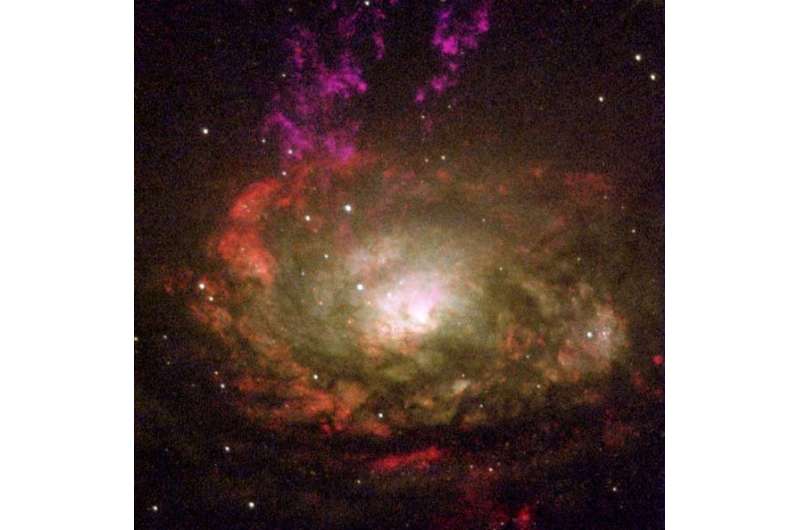the geometry of nuclear black hole accretion disks

Supermassive black holes with millions or even billions of solar-masses of material are found at the nuclei of most galaxies, including our Milky Way. A torus of dust and gas orbits around the black hole (at least according to most theories) and radiates in ultraviolet light when material falling toward the black hole heats the disk to millions of degrees. The accretion process can also power the ejection of jets of rapidly moving charged particles. Such actively accreting supermassive black holes in galaxies are called active galactic nuclei (AGN).
Astronomers who model the physical processes in one of these huge dynamos start with the gas motions and geometry of the region. The gas motions can be measured straightforwardly from emission lines in the gas, typically optical lines of hydrogen that are excited by the uv radiation. As for geometry, simple calculations estimate that the radius of line-emitting gas should be a few thousand astronomical units (one AU is the average distance of the Earth from the Sun). Because most AGN are too far away to be able to measure dimensions this small, astronomers have come to rely on the technique of "reverberation mapping." Radiation from the accretion disk is highly variable. Since it takes time for the uv to travel from the accretion disk near the black hole out to the line-emitting gas, there is a delay between an event seen in the continuum and then in the hydrogen lines
CfA astronomer Anna Pancoast and a team of her colleagues analyzed reverberation mapping data of four AGN to study their geometries and, in particular, the volume of hot gas known for its rapid motions, the so-called broad line region because the spectral lines have widths corresponding to as much as three thousand kilometers per second. The scientists find the geometry of this gas, at least in these four AGN, is well-described as coming from thick disks seen nearly face-on, with median radii from about 1600 AU to 4000 AU, and each with a black hole whose mass is about seventy million solar-masses (with an estimated precision for each one of about 50%). The new work was successful in modeling the observations and nearly doubles the size of the AGN sample modeled with this technique. The sample is still small, however, and more observations are being planned.
More information: C. J. Grier et al. The Structure of the Broad-line Region in Active Galactic Nuclei. II. Dynamical Modeling of Data From the AGN10 Reverberation Mapping Campaign, The Astrophysical Journal (2017). DOI: 10.3847/1538-4357/aa901b
Journal information: Astrophysical Journal
Provided by Harvard-Smithsonian Center for Astrophysics





















